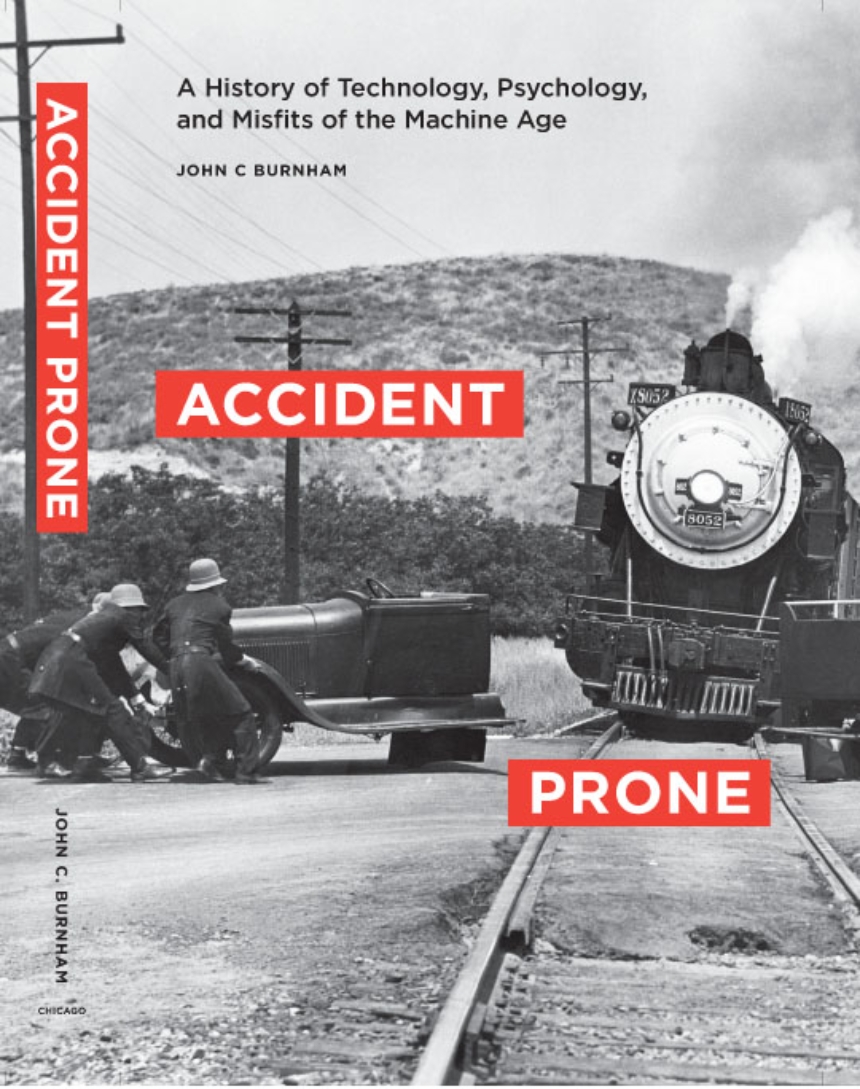Accident Prone
A History of Technology, Psychology, and Misfits of the Machine Age
Accident Prone
A History of Technology, Psychology, and Misfits of the Machine Age
Technology demands uniformity from human beings who encounter it. People encountering technology, however, differ from one another. Thinkers in the early twentieth century, observing the awful consequences of interactions between humans and machines—death by automobiles or dismemberment by factory machinery, for example—developed the idea of accident proneness: the tendency of a particular person to have more accidents than most people. In tracing this concept from its birth to its disappearance at the end of the twentieth century, Accident Prone offers a unique history of technology focused not on innovations but on their unintended consequences.
Here, John C. Burnham shows that as the machine era progressed, the physical and economic impact of accidents coevolved with the rise of the insurance industry and trends in twentieth-century psychology. After World War I, psychologists determined that some people are more accident prone than others. This designation signaled a shift in social strategy toward minimizing accidents by diverting particular people away from dangerous environments. By the 1960s and 1970s, however, the idea of accident proneness gradually declined, and engineers developed new technologies to protect all people, thereby introducing a hidden, but radical, egalitarianism.
Lying at the intersection of the history of technology, the history of medicine and psychology, and environmental history, Accident Prone is an ambitious intellectual analysis of the birth, growth, and decline of an idea that will interest anyone who wishes to understand how Western societies have grappled with the human costs of modern life.
336 pages | 46 halftones, 1 line drawing | 6 x 9 | © 2009
History: General History, History of Technology
Sociology: Occupations, Professions, Work
Reviews
Table of Contents
Acknowledgments
Introduction
Chapter 1. Before Accident Proneness
Chapter 2. German Origins
Chapter 3. British Origins
Chapter 4. Preparing the Way: Transport Operators
Chapter 5. The Streams Come Together in the Late 1920s and Early 1930s
Chapter 6. Consolidation and Development, 1930s–World War II
Chapter 7. How Psychiatrists Did Not Adopt and Medicalize Accident Proneness
Chapter 8. The Mid-Twentieth-Century High Point
Chapter 9. Eclipse of the Idea Among Experts
Chapter 10. Bypassing Accident Proneness with Engineering
Conclusion
Notes
Brief Bibliographical Note
Index
